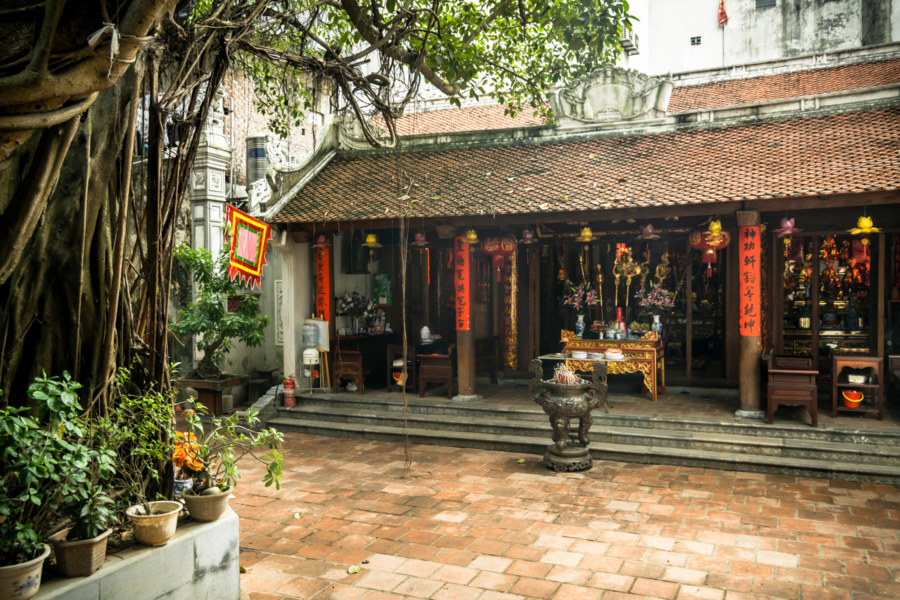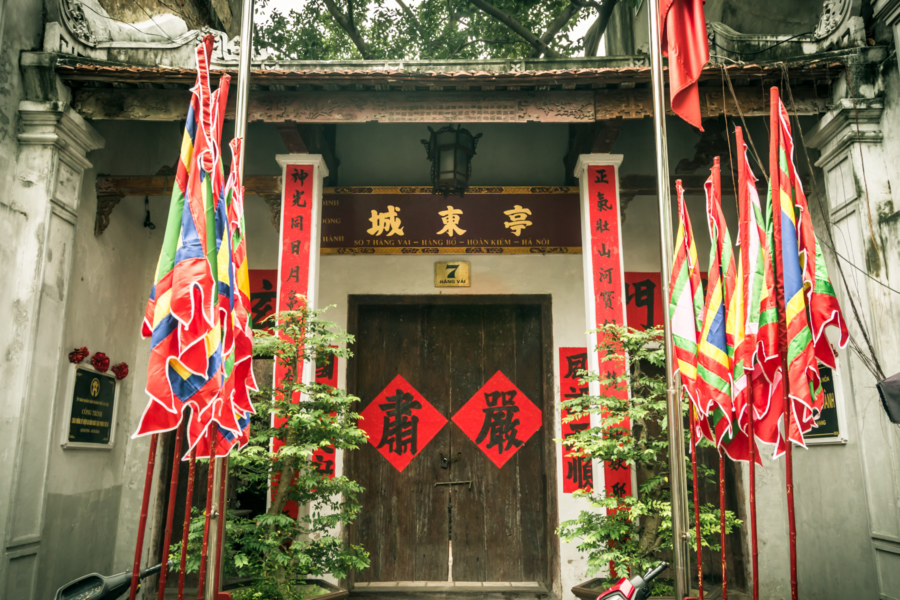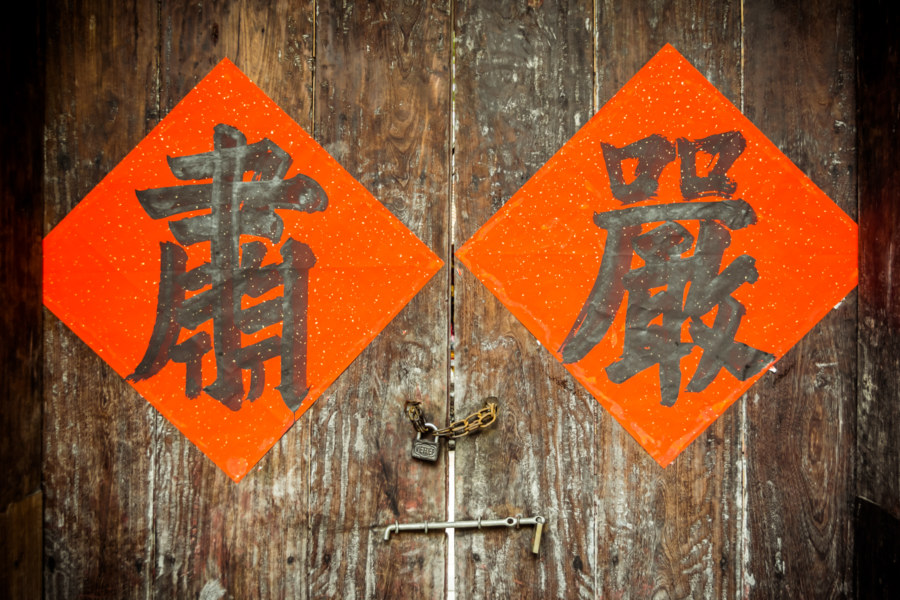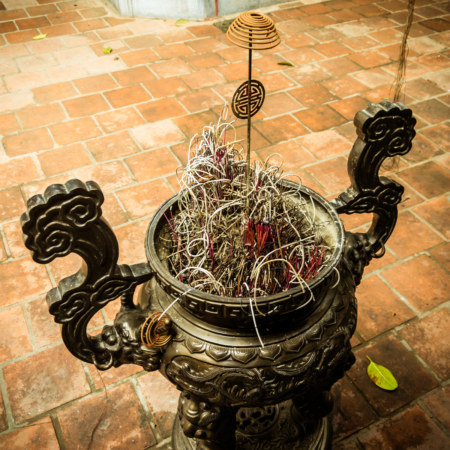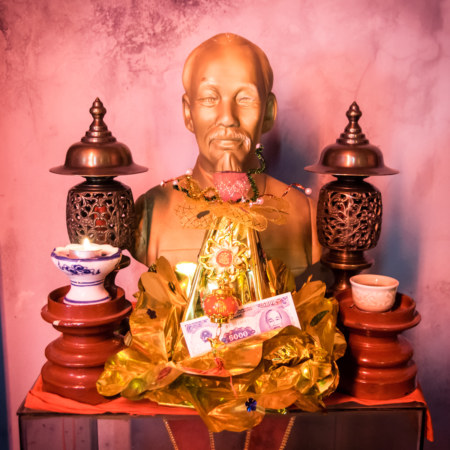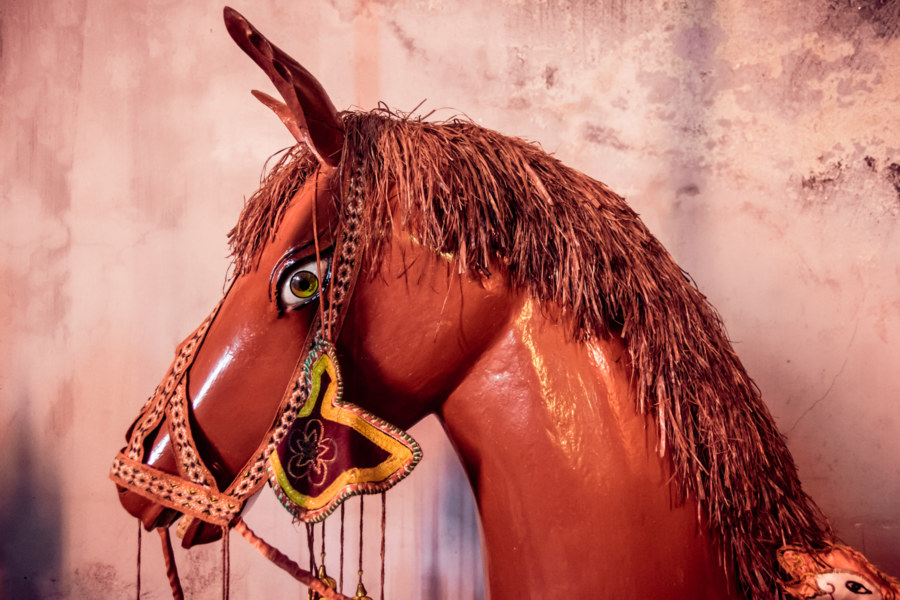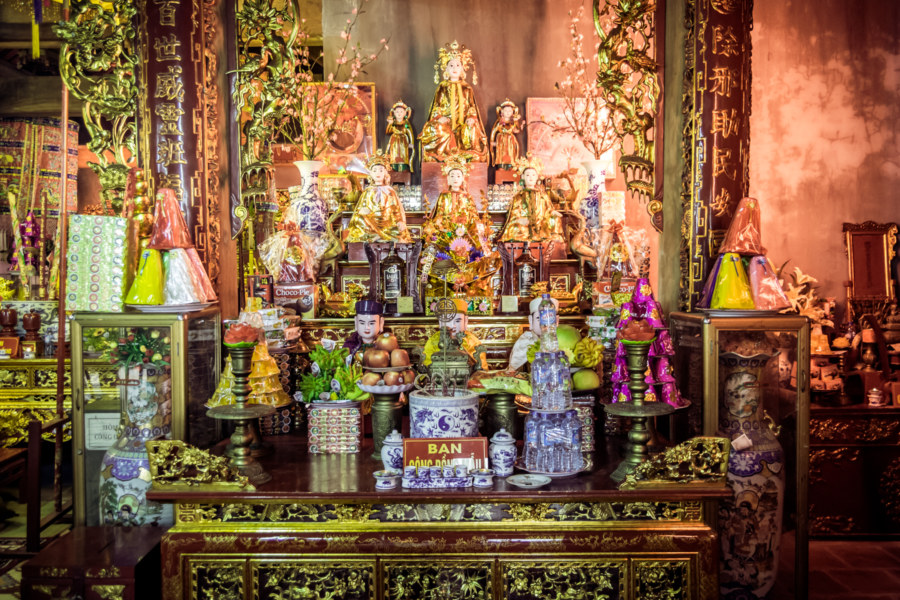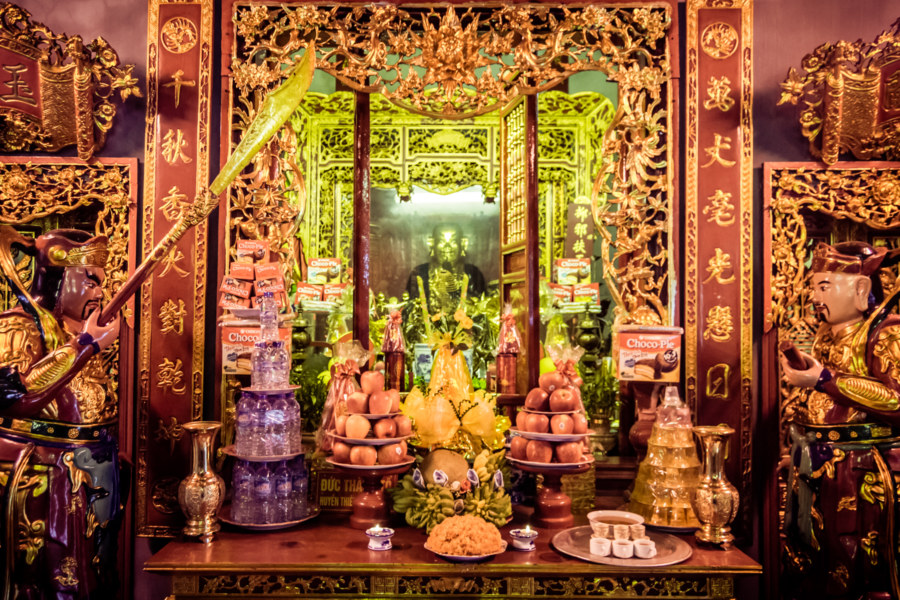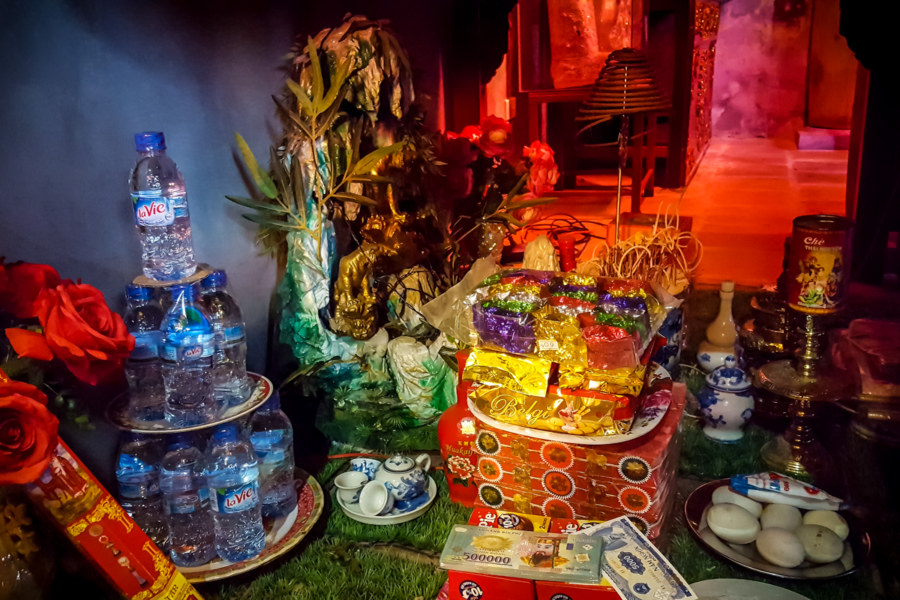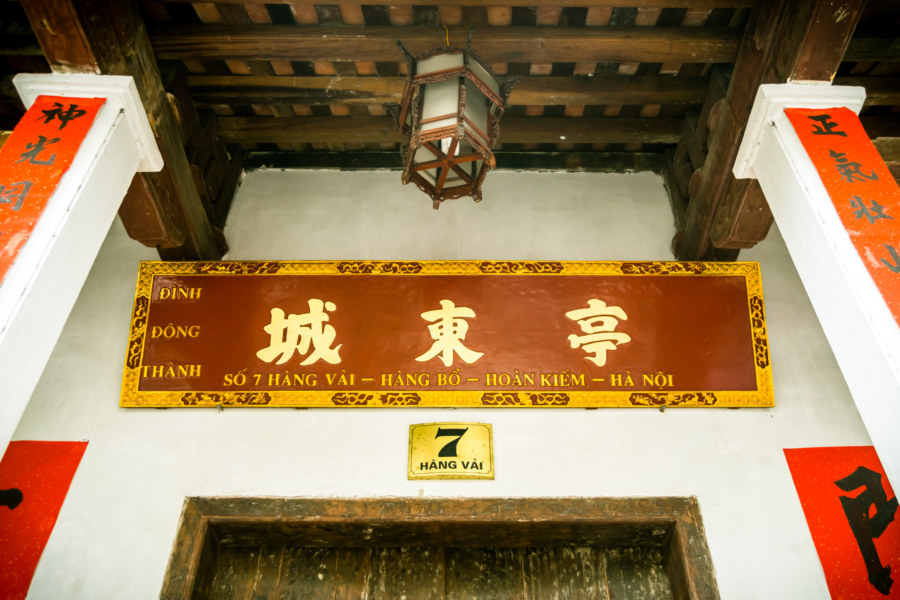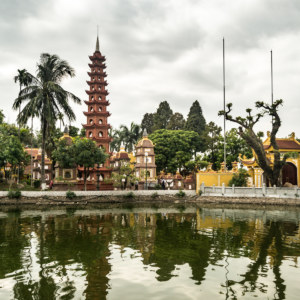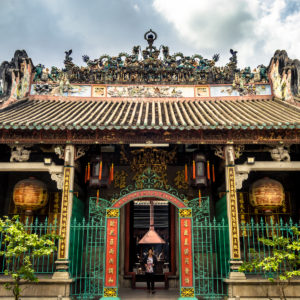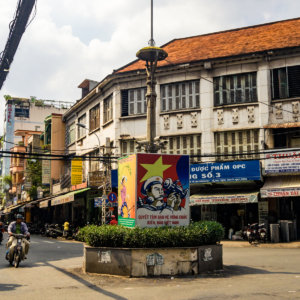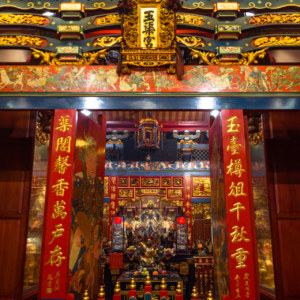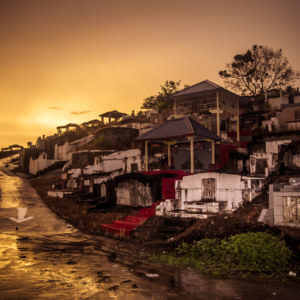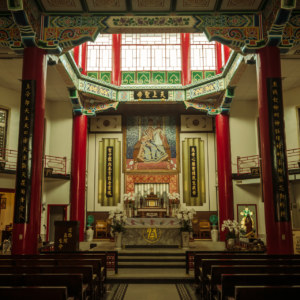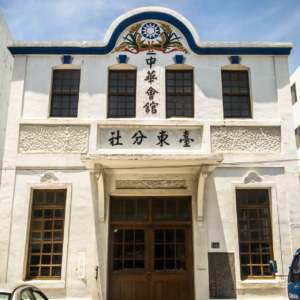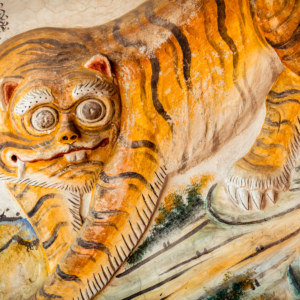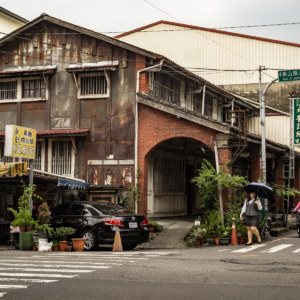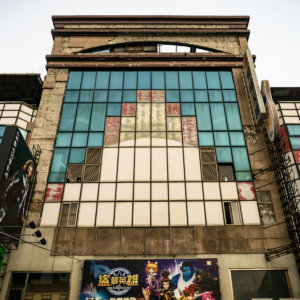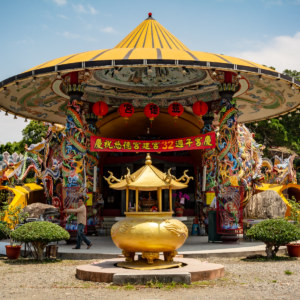One of the more interesting temples I stepped inside on a recent visit to the Old Quarter of Hanoi is the recently renovated Đình Đông Thành (亭東城, loosely: “East City Pavilion”). Having explored many temples in Taiwan over the years I was familiar with some of what I found there—but much of it was completely foreign to me. Looking up information after the fact hasn’t been educational; there are no English language resources about this temple and I haven’t got the same knack for finding information in Vietnamese as I have with Chinese language resources about Taiwan. So, if you’ll pardon my lack of local expertise, I’m going to share a few photos from this relatively obscure temple and attempt to puzzle through some of what caught my eye.
First, a little history: this temple reputedly dates back to the early 19th century. It is located on Hàng Vải, an Old Quarter street traditionally known its fabric vendors (Vai literally means cloth), and for this reason it is also known as Đình Hàng Vải. Most accounts I’ve perused highlight the fact that this temple was used as a first aid station for Viet Minh fighters during the Battle of Hanoi in winter 1946, an urban insurgency against the French that began the First Indochina War. Just a few years ago the entire temple was stripped down to the foundation and completely reconstructed.
This temple venerates the Taoist deity Trấn Vũ, god of the north star, known in Chinese as Xuán Wǔ (玄武). I have previously written about this god at length in my write-up about Hengwen Temple in Taiwan so I won’t repeat myself here. Suffice to say, the “dark and mysterious warrior” is joined by the same two generals you’ll find at most temples in Taiwan.
In recent months I have acquired a new hobby: hunting for Hǔ Yé (虎爺), the tiger general of Chinese folk religion. Tiger shrines are typically placed beneath other altars, usually Tudigong (土地公) or some other martial god, often in hidden nooks and recesses. The reason for this placement is simple: it symbolizes the god on the altar above riding the tiger like a man would ride a horse! It is curious, then, that this tiger general shrine would be placed beneath a shrine to Đạo Mẫu, the mother goddess depicted above, but that’s another story. At any rate, it is great fun to go looking for tigers in any temple you visit in Asia, and finding Hu Ye in this one was a nice surprise.
Incidentally it was nice to wander around a Vietnamese temple not set up for tourism at all. I couldn’t even find this place on Google Maps and had to look up the name by translating the Chinese characters from the nameplate over the entrance. Nobody was present when I visited—I just slipped my shoes off at the door and stepped lightly across carpeted concrete floor while circumambulating the altars as I applied some of my growing knowledge of temple culture in Taiwan to a very different context. For more about Chinese temple culture in Vietnam check out this post from Cholon, a historic Chinatown down south.
